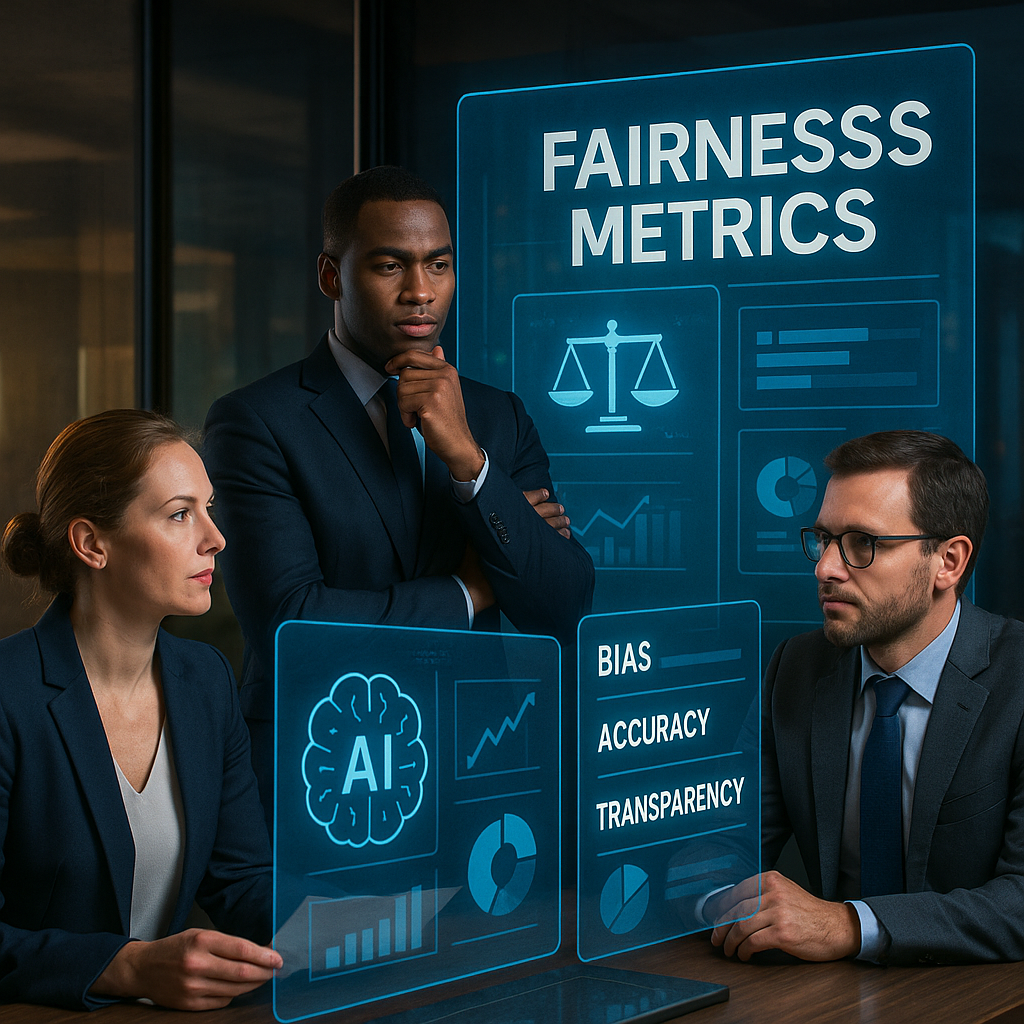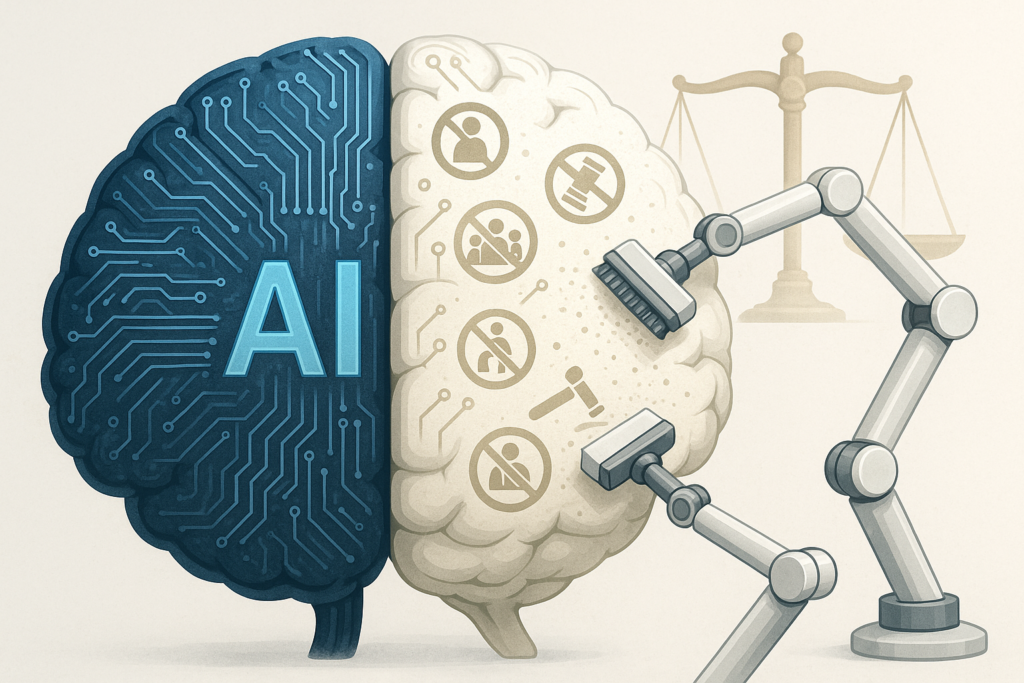Physical Address
304 North Cardinal St.
Dorchester Center, MA 02124
Physical Address
304 North Cardinal St.
Dorchester Center, MA 02124

What if the AI systems shaping our world could be trusted to be fair, transparent, and ethical — would you feel safer about the future? As AI adoption soars, so do concerns about ai ethics and ai bias. A recent study predicts that over 80% of organizations will depend on AI for decision-making by 2030, yet biased algorithms and hidden processes continue to fuel misinformation, unfair outcomes, and public skepticism.
Responsible ai is more than a trendy phrase; it’s a guiding framework that helps us design and deploy technology that respects human values and builds confidence. It’s about creating systems that are inclusive, accountable, and built with transparency from the start. Concepts like algorithmic fairness play a crucial role in ensuring that automated decisions don’t favor one group over another.
In this article, we’ll explore how responsible AI can crush bias, rebuild trust, and empower brands to produce content that feels authentic and credible. We’ll look at what AI bias really means, examine practical ways to reduce it, and unpack the principles behind responsible AI that major organizations are already using. By the end, you’ll see why responsible AI is not just the future — it’s the foundation for a fairer, more trustworthy AI-driven world.
So, what exactly is responsible ai and why is everyone talking about it? Think of it as a blueprint for building AI that people can trust. At its core, responsible ai is a framework that makes sure every AI system is designed with fairness, transparency, and accountability in mind. Instead of just focusing on what AI can do, it asks whether AI should do something — and how to do it in a way that benefits everyone.
The responsible ai framework is built around a few key pillars: ethics, governance, transparency, inclusivity, and safety. These pillars work together to prevent issues like ai bias from creeping into decisions that affect hiring, healthcare, content recommendations, and even financial services. By following responsible ai principles, businesses can create systems that are more fair, explainable, and reliable.
AI ethics plays a huge role here, guiding the values behind how we train and deploy AI models. Concepts like algorithmic fairness ensure that decisions aren’t skewed toward one group over another. And governance adds the processes, audits, and policies needed to keep AI aligned with organizational values and legal requirements.
Imagine a diagram here showing these pillars working together — a simple but powerful way to visualize how responsible ai keeps innovation on track while protecting users.
In short, responsible ai isn’t just about technology. It’s about creating a future where people trust the systems that guide their lives, because they know those systems are fair, transparent, and built to prioritize the well-being of humans.

If you’ve ever wondered why some AI decisions feel “off,” you’ve likely seen AI bias in action. AI bias, also known as algorithmic bias, happens when an artificial intelligence system produces unfair or skewed outcomes. This bias can come from unbalanced training data, flawed assumptions, or even how humans design the system in the first place.
Bias in artificial intelligence isn’t just a technical glitch — it’s a real-world problem with serious consequences. For example, studies have shown that healthcare algorithms sometimes underestimate the needs of Black patients, leading to unequal access to care (source). In hiring, AI recruiting tools have been found to favor male candidates over equally qualified women, as they were trained on historically biased hiring data (source). Even in content moderation, AI systems have been criticized for over-policing some communities while allowing harmful content elsewhere (source).
Bias in AI = Biased Outcomes
The impact of AI bias goes beyond bad predictions — it erodes trust, creates reputational risks, and can even expose companies to legal liability. Imagine a customer denied a loan because the algorithm was trained on biased data, or a qualified job applicant overlooked by an AI-driven hiring system. These moments don’t just frustrate users — they damage brand credibility and highlight why responsible AI is so essential.
The good news? Recognizing AI bias is the first step toward fixing it. By implementing better data practices, auditing algorithms regularly, and applying fairness metrics, organizations can begin to rebuild trust and ensure AI systems serve everyone equally.
If responsible ai is the big picture, then algorithmic fairness is one of its most important building blocks. In simple terms, algorithmic fairness means making sure AI systems treat people equitably — regardless of gender, race, location, or background. It’s about preventing hidden patterns in data from turning into unfair outcomes that undermine trust.
Why does this matter so much? Because ai bias isn’t always obvious until it harms someone. A hiring algorithm that consistently favors one demographic over another, or a healthcare model that under-predicts risks for certain patient groups, can create real-world inequities. Fairness gives people confidence that AI decisions are guided by ethical principles and not by flawed data or hidden discrimination. In fact, research has shown that users are significantly more likely to trust and adopt AI systems when fairness and transparency are built in from the start (source).
So, how do we achieve fairness? It starts with data diversity — making sure training datasets include a wide range of perspectives and experiences. Next, debiasing algorithms can be used to detect and reduce unwanted skew in model outputs. And finally, regular audits are crucial to catch problems early and ensure ongoing compliance with responsible ai principles and ai ethics.
By mitigating AI bias through these steps, organizations can move closer to building AI systems that are not only powerful but also trustworthy. Algorithmic fairness isn’t just a technical goal — it’s the foundation of an ethical AI future.

By 2030, responsible ai principles are no longer just nice-to-have ideas — they are becoming global standards. Around the world, organizations, policymakers, and researchers are working together to define how AI should behave and how it should be governed. These principles typically center on fairness, transparency, accountability, and human oversight, making sure technology works for everyone, not just a privileged few.
Big players like Microsoft and AWS have been leading the way in this space. The Microsoft responsible ai approach includes six core principles: fairness, reliability, safety, privacy, inclusiveness, and accountability. They’ve even built internal tools like their “Fairlearn” library to help developers detect and address ai bias in machine learning models. Similarly, AWS responsible ai initiatives provide governance frameworks and best practices for customers to deploy AI ethically, with services that support explainability, data privacy, and algorithmic fairness.
Governance is where these principles turn into real action. Many companies are setting up ethics boards that review high-impact AI projects before they go live. Others are adopting compliance frameworks, such as the Texas Responsible AI Governance Act, which sets out requirements for transparency and risk management when using automated decision systems. These frameworks are helping businesses stay ahead of regulation while protecting consumers.
The responsible ai governance conversation isn’t limited to tech giants. The Responsible AI Institute, a global nonprofit, offers certification programs that help organizations measure and improve their responsible ai practices. This allows even small and mid-sized companies to adopt a consistent approach to AI ethics and governance.
By aligning with responsible AI principles and using governance models that encourage accountability, businesses can mitigate AI bias, build trust, and deliver technology that reflects human values. In the end, governance is what keeps innovation balanced with responsibility — making sure AI remains a tool for progress, not a source of harm.
AI in Content Creation:
Trust & Transparency Challenges:
Solutions to Build Trust:
AI Content Strategy for the Future:
Mitigating ai bias has become one of the most important priorities for organizations that want to build trust in their technology. AI bias isn’t just a technical issue — it has real-world consequences that can impact hiring, healthcare, lending, and content moderation. That’s why responsible ai and ai ethics both place such a strong focus on identifying and reducing unfair outcomes.
Today, some of the most effective strategies involve getting the data right from the start. Diverse and well-labeled datasets help prevent hidden patterns from turning into biased predictions. Explainable AI tools, often called XAI, are also helping developers and business leaders understand why an algorithm made a particular decision, which is crucial for spotting problems early (learn more here). Regular bias audits are becoming a best practice, giving teams a way to monitor performance and catch unintended discrimination before it reaches end users. Adding algorithmic fairness checks during model testing ensures AI systems are more balanced before they go live.
Looking ahead to 2030, the future of ai bias mitigation will be even more proactive. Predictive fairness metrics will help detect potential bias before a model is deployed, rather than waiting until users are harmed. Real-time debiasing will allow systems to adjust their decision-making instantly when they detect unfair trends. AI-driven compliance tools will track regulations and ethical standards automatically, ensuring companies stay aligned with laws and responsible ai principles.
By combining today’s best practices with tomorrow’s predictive tools, organizations can move closer to a world where fairness in ai is the default. These steps don’t just protect users — they also strengthen public confidence, proving that technology can be both powerful and ethical.

The future of AI isn’t about replacing humans — it’s about working alongside them. Responsible ai emphasizes that technology and people must collaborate to achieve the best results. When humans and machines share responsibility for decision-making, it creates a system where oversight, accountability, and fairness work together. This partnership is essential for tackling challenges like ai bias and promoting algorithmic fairness.
Human oversight plays a critical role in ensuring that AI systems act in line with ethical standards. People can step in when automated decisions seem questionable, investigate outcomes, and provide feedback that improves future performance. This is where ai ethics comes alive — not just as a set of principles but as practical guardrails guiding real-world decisions.
At the same time, AI supports humans by processing data at a speed and scale that would otherwise be impossible. This collaboration allows for faster problem-solving, from detecting fraud to moderating harmful online content. It also makes it easier to implement responsible ai frameworks by automating bias checks, compliance reporting, and system monitoring.
When humans and AI work together, trust grows. People are more willing to adopt new technologies when they know there’s a transparent process behind them and someone to hold accountable when things go wrong. By designing systems where humans stay in the loop, organizations can create AI solutions that are not just efficient but also ethical, reliable, and aligned with human values.
Making AI systems fair and trustworthy isn’t just good for society — it’s good for business too. As artificial intelligence becomes more deeply embedded in everyday operations, customers and regulators are increasingly focused on whether companies are using it responsibly. Organizations that take a proactive approach to fairness, transparency, and accountability often find that it pays off in the long run.
One of the biggest benefits is improved trust. People are more likely to interact with a company’s products when they believe the technology behind them is fair and unbiased. In a world where a single misstep can quickly go viral, showing that your systems are carefully designed and regularly reviewed helps protect your brand’s reputation.
There’s also a strong risk management advantage. Companies that build ethical review processes and regular model audits into their workflows are better prepared to meet emerging regulations and industry standards. This can prevent costly compliance problems, lawsuits, or public backlash later on.
Finally, prioritizing ethical AI practices can drive better business outcomes. Transparent systems tend to see higher user adoption, more consistent results, and stronger customer loyalty. For many businesses, investing in responsible design is no longer just a moral choice — it’s a competitive edge that sets them apart in a crowded market.
By 2030, we’re likely to see a world where AI is not only everywhere but also far more accountable than it is today. Imagine fully regulated AI ecosystems where systems are audited regularly, transparency reports are the norm, and AI literacy is as common as basic computer skills. People will expect technology to explain its decisions, not just make them, and businesses that can deliver on that expectation will have a huge advantage.
This future won’t just be about meeting compliance requirements — it will be about earning trust. Companies that integrate fairness, transparency, and accountability into their AI from the start will be the ones customers choose to work with. In a marketplace crowded with AI-powered products, trust will be the deciding factor that sets winners apart.
The key takeaway is clear: adopting responsible ai isn’t optional anymore — it’s the competitive edge. Whether you’re building AI tools, using them for content strategy, or integrating automation into decision-making, the time to put guardrails in place is now.
If you haven’t already, start exploring responsible ai frameworks, set up regular audits, and invest in educating your teams about ethics and bias. The sooner you commit to building trustworthy AI, the better prepared you’ll be for the future — and the more confidence your customers will have in you.
Q1: What are the main principles behind building ethical AI?
Ethical AI is about creating systems that are fair, transparent, and accountable. It ensures that technology respects human values, protects privacy, and works in ways that benefit all users — not just a select few.
Q2: How does bias appear in AI systems?
Bias often comes from the data used to train algorithms. If the training data reflects historical inequalities or doesn’t include diverse perspectives, the system may make decisions that unintentionally favor some groups over others.
Q3: What can companies do to reduce unfair outcomes in AI?
Organizations can start by using more diverse datasets, reviewing model decisions regularly, and building oversight processes into their workflows. Clear documentation and human review at critical decision points also help ensure fairer outcomes.
Q4: Why is transparency so important?
When users understand how an AI system makes decisions, they are more likely to trust and adopt it. Transparency also allows errors or unfair patterns to be caught early, which protects both the business and its customers.
Q5: Are smaller businesses able to use responsible practices too?
Absolutely. Many tools and frameworks are available to help smaller teams adopt ethical AI practices without needing huge budgets. Even basic steps — like regular data checks and documenting how decisions are made — can make a big difference.
Q6: Is trust really a competitive advantage?
Yes. In a world where customers can choose between dozens of AI-powered products, trust often becomes the deciding factor. When people believe that your systems are safe, transparent, and fair, they are far more likely to engage with and recommend your business.
Want to take the next step? Visit icebergaicontent.com to explore practical strategies for building trust, improving transparency, and making your AI projects future-ready.